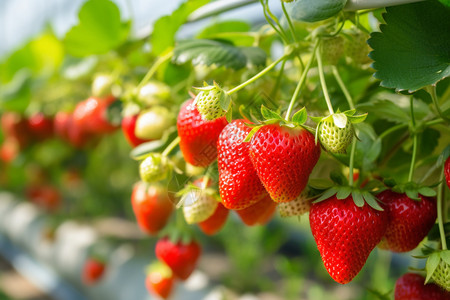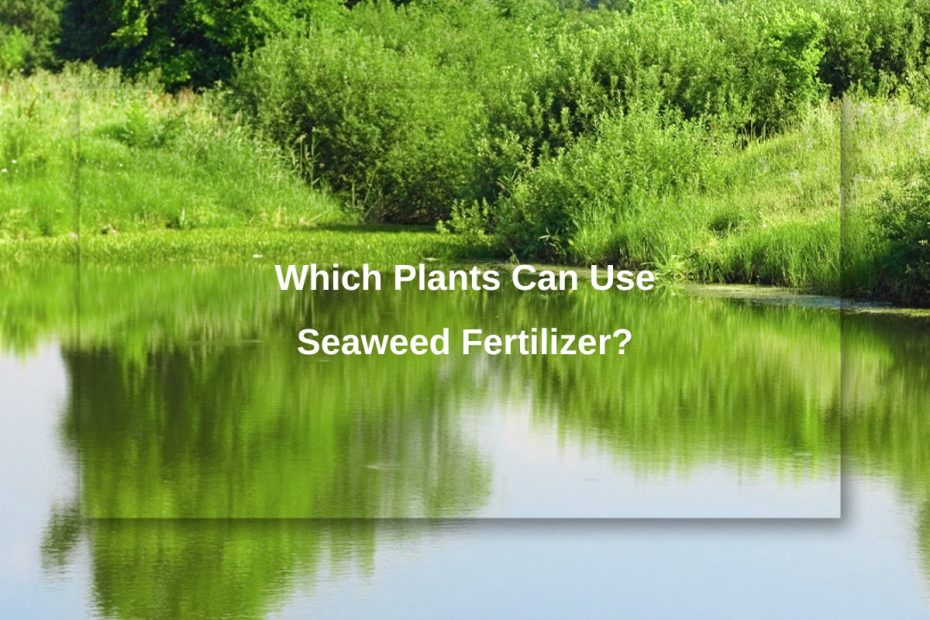Introduce
Seaweed fertilizer is known for containing high concentrations of essential nutrients such as nitrogen, phosphorus, potassium, iron, zinc, and magnesium, which are essential for promoting plant growth, development, and healthy vitality. Additionally, seaweed fertilizers contain natural growth regulators such as auxins, cytokinins, and gibberellins, which regulate plant growth processes and promote root development. So, which plants benefit most from seaweed extract?
What is Seaweed Extract?
Seaweed extract is derived from a variety of seaweeds, such as brown algae, Ascophyllum nodosum, or kelp, and is a natural and organic product found in the ocean. Seaweed fertilizers are available in liquid, powder, or granular form and offer many benefits for plant and soil health.
- Stimulates root growth: Seaweed extract promotes the growth of strong, expanding roots, improving plant nutrient and water uptake efficiency. This increases the plant’s ability to withstand environmental stresses such as drought and transplant shock.
- Enhances plant vitality: Seaweed extract aids in the production of chlorophyll, promoting greening of leaves and promoting photosynthesis. It also supports flowering, fruiting, and seed production, resulting in increased yields and superior crop quality.
- ORGANIC AND ECO-FRIENDLY: Seaweed extract is valued by organic gardeners and farmers for its natural origin and eco-friendly properties. As a sustainable alternative to synthetic extracts, it reduces the need for chemical inputs, thereby minimizing adverse environmental impacts.

Which Plants Are Suitable for Using Seaweed Fertilizer?
Seaweed fertilizer benefits many plants, including flowers, vegetables, fruits, herbs, and trees. That said, most plants can benefit from the nutrients provided by the seaweed extract in seaweed fertilizer. However, it is recommended to consider the specific needs of individual plant species.
- Vegetables:
Tomatoes, peppers, cucumbers, leafy greens (such as lettuce, spinach, and kale), beans, squash, and zucchini can thrive with the help of seaweed fertilizer as it supports their nutrient uptake and improves yield quality. ,
- Fruit:
Fruit plants such as strawberries, blueberries, citrus, peaches, avocados and grapes respond well to seaweed fertilizers. Natural growth stimulants in seaweed promote flowering, fruit set and overall productivity.
- Flowers:
Use seaweed fertilizer to help flowering plants such as roses, hydrangeas, and marigolds flourish. The nutrients in seaweed promote vibrant flowers and strong, healthy stems.
- Vanilla:
Herbs like basil, rosemary, mint, and parsley, and spice plants like turmeric and ginger thrive with the help of seaweed fertilizer. The organic matter in seaweed helps the growth of delicious and aromatic herbs.
- Indoor plants:
Even indoor plants can benefit from seaweed fertilizer. Plants such as ferns, peace lilies, spider plants and pothos can absorb nutrients from seaweed to maintain lush green foliage.

Seaweed Fertilizer Application Tips
1. Timing
Apply seaweed fertilizer during the growing season when plants are actively growing and need extra nutrients, such as in the UK, usually between March and September. Application in the early morning or evening when temperatures are cooler is usually most beneficial.
2. Proper dilution
Seaweed extracts usually come in concentrated form. Before use, dilute the extract according to the directions on the product label. This usually involves mixing a certain amount of concentrate with water to achieve the desired strength to prevent nutrient imbalance or plant burn.
3. Root dip
First, remove the plants from their containers and carefully separate them if placed in seedling trays. Then dip the roots of each plant into a diluted seaweed extract solution, making sure to cover the entire root system. Allow the roots to soak in the seaweed extract solution for a few minutes for maximum absorption. Finally, lift the plant out of the solution and allow excess liquid to drain back into the container.
4. Frequency of administration
Application frequency may vary depending on the specific seaweed extract and plant needs. Generally speaking, it is recommended to apply seaweed fertilizer every 2-4 weeks during the growing season. For best results, apply seaweed fertilizer regularly throughout the growing season to support continued plant growth and development. KHUMIC provides after-sales guidance and can customize plans according to plant needs.
5. Combine with other fertilizers
Seaweed fertilizers can be combined with other extracts or organic amendments to form a nutrient-rich soil amendment that enhances plant vitality, thus enhancing the effectiveness of seaweed fertilizers.
6. Seaweed fertilizer application method
- Soil Watering: For best results, pour diluted seaweed fertilizer directly onto the soil around the base of your plants. This allows the roots to absorb nutrients and promotes the overall health of the plant.
- Foliar spray: Diluted seaweed fertilizer can be sprayed directly onto the leaves of your plants. This method allows rapid absorption of nutrients through the leaf surface. It is particularly useful for providing rapid nutritional supplementation and promoting vegetative growth.
Buy Seaweed Fertilizer at KHUMIC
Seaweed fertilizer is an effective solution in gardening, to ensure the highest purity, buy from a trusted brand like KHUMIC. KHUMIC seaweed fertilizer is extracted from 100% fresh Ascophyllum nodosum. It is rich in powerful antitoxins that help plants fight harmful bacteria and viruses, repel pests, and regulate plant growth.

FAQs
Is seaweed fertilizer suitable for all types of plants?
Seaweed fertilizers are often beneficial to a variety of plants, including fruits, vegetables, ornamental plants, herbs, and spices.
Can seaweed fertilizer be used on indoor plants?
Yes, seaweed fertilizer can be used on indoor plants to promote growth and health, but be sure to follow the application guidelines for houseplants.
How often should I fertilize my plants with seaweed fertilizer?
Application frequency varies depending on plant type and growth stage, but a general guideline is to apply every 2-4 weeks during the growing season.
Can seaweed fertilizers replace traditional chemical fertilizers?
Seaweed fertilizers can complement traditional fertilizers and reduce reliance on synthetic chemicals, promoting a more sustainable and eco-friendly approach to plant care.
